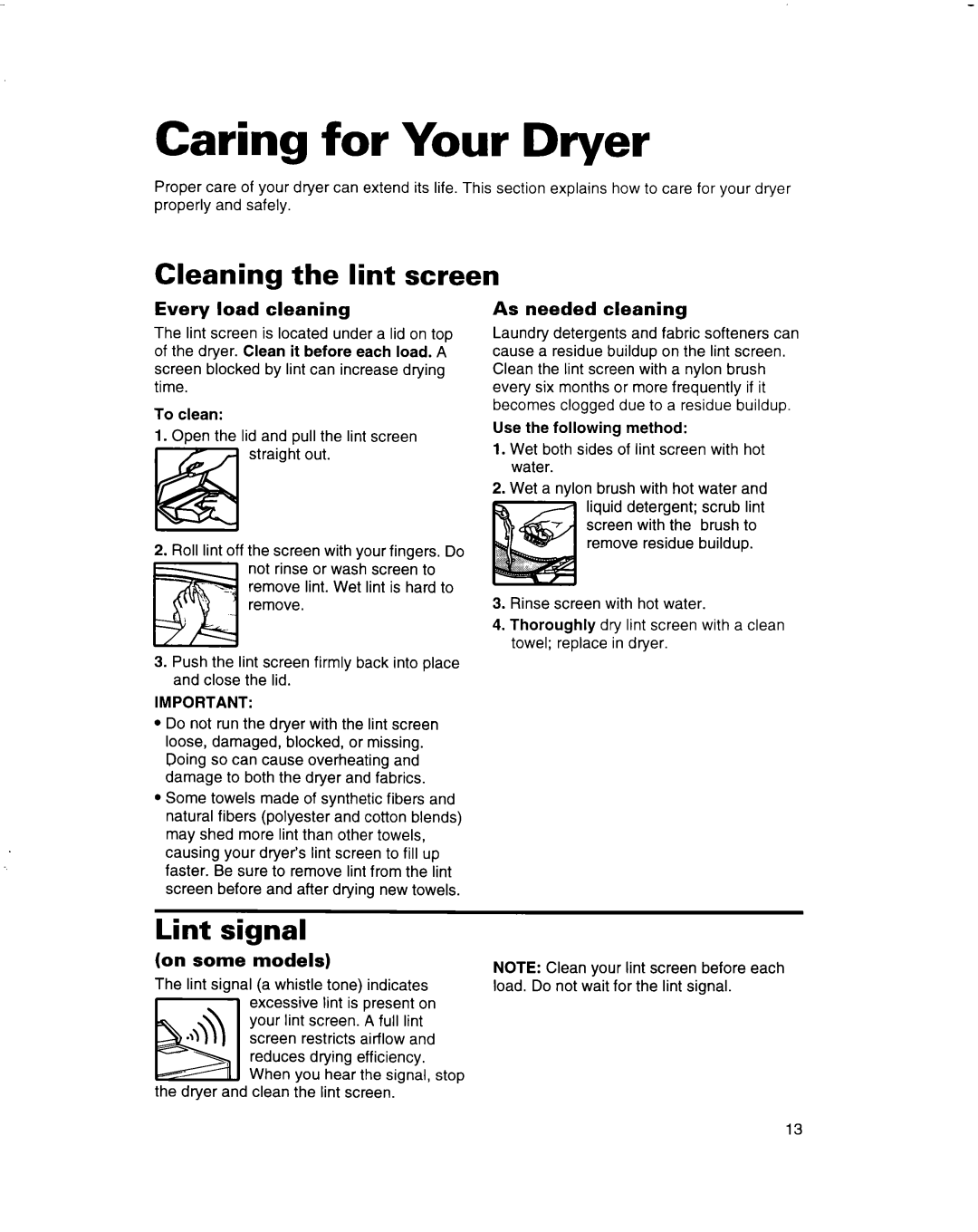
Caring for Your Dryer
Proper care of your dryer can extend its life. This section explains how to care for your dryer properly and safely.
Cleaning the lint screen
Every load cleaning
The lint screen is located under a lid on top of the dryer. Clean it before each load. A
screen blocked by lint can increase drying time.
To clean:
1.Open the lid and pull the lint screen straight out.
2.Roll lint off the screen with your fingers. Do
remove lint. Wet lint is hard to
remove.
not rinse or wash screen to
3.Push the lint screen firmly back into place and close the lid.
IMPORTANT:
•Do not run the dryer with the lint screen loose, damaged, blocked, or missing. Doing so can cause overheating and damage to both the dryer and fabrics.
•Some towels made of synthetic fibers and natural fibers (polyester and cotton blends) may shed more lint than other towels,
causing your dryer's lint screen to fill up faster. Be sure to remove lint from the lint
screen before and after drying new towels.
As needed cleaning
Laundry detergents and fabric softeners can cause a residue buildup on the lint screen. Clean the lint screen with a nylon brush every six months or more frequently if it becomes clogged due to a residue buildup.
Use the following method:
1.Wet both sides of lint screen with hot water.
2.Wet a nylon brush with hot water and liquid detergent; scrub lint screen with the brush to remove residue buildup.
3.Rinse screen with hot water.
4.Thoroughly dry lint screen with a clean towel; replace in dryer.
Lint signal
(on some models)
The lint signal (a whistle tone) indicates excessive lint is present on
screen restricts airflow and yourreduceslint screendrying . efficiencyA full lint. When you hear the signal, stop
the dryer and clean the lint screen.
NOTE: Clean your lint screen before each load. Do not wait for the lint signal.
13
